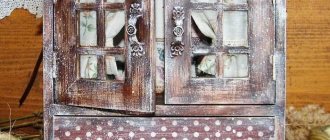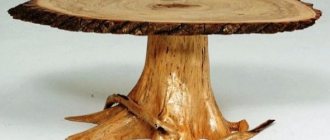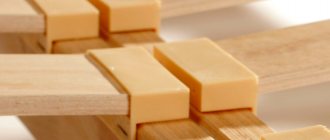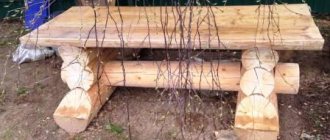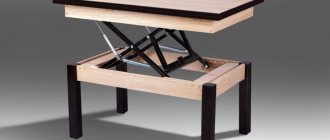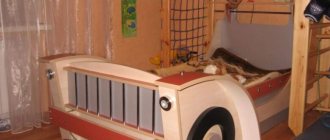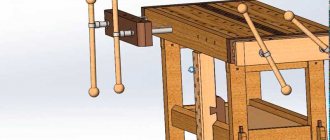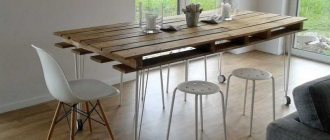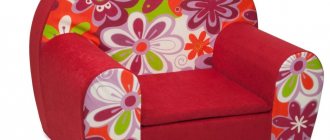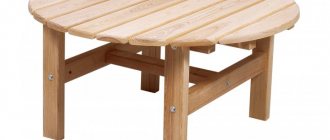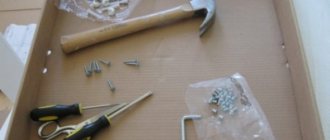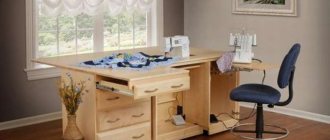One of the mandatory attributes of human housing is a table. It should be in an apartment, a cottage, and a summer house in the country.
Making a wooden table with your own hands is not as difficult a task as it seems at first glance. A simple design that is suitable for a summer house can be assembled by absolutely anyone, even if this is the first time they have picked up a carpenter’s tool.
More complex models that will decorate the kitchen or living room will require a creative approach and certain skills, but this work is also doable if you follow certain rules.
Requirements for a homemade table
In production conditions, furniture is tested for compliance with the quality guarantee and recommended standards. When working independently, the master himself monitors the compliance of new furniture with safety requirements:
- Sufficient strength. Any furniture, even decorative, must withstand the slightest load. It is especially important to check the strength of fasteners and joints on dining and student tables.
- Environmental safety of the materials used. You should not build a table from materials containing harmful resins or toxic impurities. Also, such compositions cannot be used for decorative processing.
- Moisture resistant. If the table being manufactured is intended for eating and preparing dishes, care should be taken to ensure high-quality and timely impregnation of the surfaces with appropriate compounds.
- Mobility, compactness, possibility of transformation. The presence of such qualities will only play into the hands of owners of small apartments, houses, and summer cottages. After being used for its intended purpose, the folding table can be stored in the pantry.
In the process of independent work, it is important to strictly follow the prepared drawing and plan, because the quality and possible service life of the future product directly depend on this parameter.
Selecting material for work
The tabletop itself and the support legs can be made from the following materials:
- Solid wood.
- Chipboard and MDF panels.
Natural wood undoubtedly has a number of advantages over pressed wood chips. Solid timber is more durable, has a larger cross-section, and the service life of a wooden table is quite long.
However, chipboard and MDF panels are affordable and also serve as an excellent basis for subsequent surface decoration.
Also, for work you will need an organized workplace with a sufficient level of lighting and high-quality ventilation, because processing wooden surfaces involves the presence of unpleasant and pungent odors.A table with a wooden base coated with a layer of epoxy resin has a very original and advantageous design. In such cases, the master has the opportunity to decorate the tabletop at his own discretion.
To get started, you will need to prepare the following set of tools:
- Planer and sandpaper for sanding surfaces.
- Jigsaw for cutting wood.
- Compositions for pre-impregnation.
- Stain and acrylic varnish.
- Epoxy resin (if you plan to decorate the countertop).
- Fasteners: self-tapping screws, metal corners, nails.
Step-by-step table assembly
They begin work by preparing all tools and materials. The following are instructions on how to make a table with your own hands:
- Markings are made on the original wooden beam (or chipboard panels) in accordance with the prepared drawing.
- Using a jigsaw, cut out parts for the tabletop, supporting structures and additional panels.
- Each part is carefully polished, removing nicks, sharp edges, and irregularities.
- The next stage is impregnation of the wood with solutions of antiseptics, antipyretics, and moisture-resistant compounds. Treating surfaces with antifungal drugs will protect wood and new furniture from the development of pathogenic fungi.
- After the wood has completely dried, you can begin further work - assembling the table.
- Depending on the shape and model of the product, assembly is carried out. Metal corners are attached along the inner edge, and self-tapping screws along the outer edge. Mount rotary fittings and additional panels (if present in the structure).
The master also has the opportunity to use wood burning or fill the countertop with epoxy resin. The choice depends entirely on the skill and personal desire of the master.
Table for a summer house or gazebo with carpentry joints
Such products use so-called blind parts, that is, parts made only partly deep, grooves and assembly “without a single nail” (adjusted for modern realities, without metal parts).
As can be seen from the diagram, the connection of the drawer and the leg in this case is made using grooves, additionally secured with dowels. Wedge connections are also used.
Another version of the table with a partially hinged lid.
Important: for carpentry joints do not use “sharp” wood - pine, spruce. Hardwoods, deciduous, well dried and processed are preferred.
It is better to assemble models using self-tapping screws from available materials (pallets, used boards and timber, plywood, etc.).
If the assembly uses ready-made turned or carved table legs with already made grooves, it is better to strengthen the structure with special metal ties.
Original ideas for homemade tables
Garden tables can be built not only from wood or chipboard panels. Many available materials are perfect for garden furniture:
- Old wooden pallets allow you to make a bar counter with a built-in countertop, an original dining table, a small bedside table, or a chest of drawers.
- Car tires stacked in one column serve perfectly as a table.
- Stone or brickwork is a great idea for a table in a summer gazebo, for example, near a barbecue.
- Old PVC pipes from which support posts can be welded (the tabletop can be made of wood).
Old metal and wooden barrels, large stumps, and stones with smooth chipped areas are often used as starting material. Such tables do not require mobility and sufficient free space, and therefore are easier to construct.
We recommend reading:
Do-it-yourself upholstery of upholstered furniture: photos of ready-made options and examples of modern design
- Do-it-yourself upholstery (upholstery) of chairs: 100 photos of ready-made options and unusual designs
- Do-it-yourself furniture decoupage: review of the best techniques, original ideas and beautiful design (140 photos)
Features of the room
Different rooms require different furniture. You don’t need to be an expert to roughly imagine how to put together a table from boards for a children’s room. It is logical to assume that you initially need to think about the age of the child so that the table fits him in size.
It’s a similar story with coffee tables – it’s logical that they should be small. In fact, everything will depend more and more on the materials from which the table will be made, and the appearance - it is especially important for housewives that such pieces of furniture look harmonious in the room.
